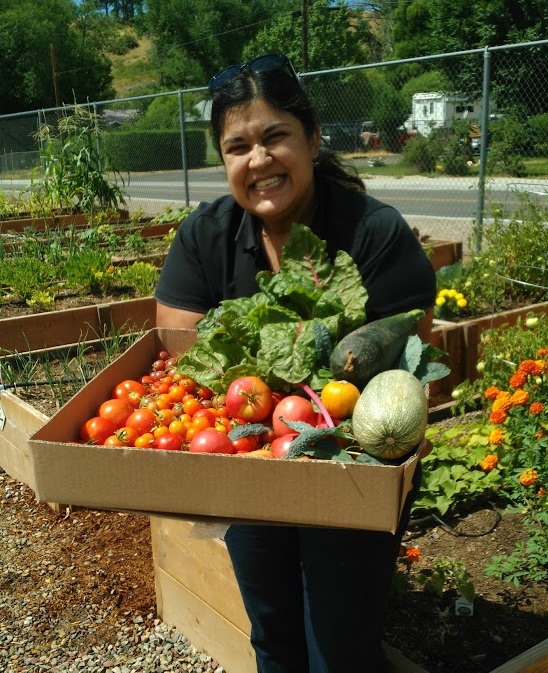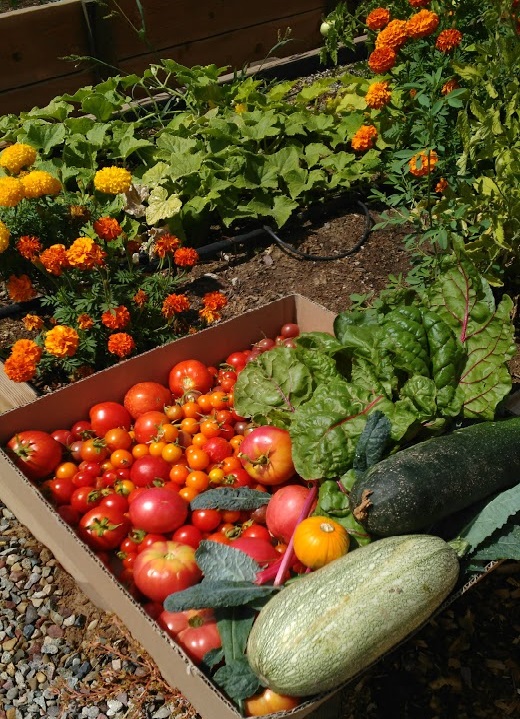One of the most satisfying parts of cultivating and caring for a vegetable garden is enjoying the literal fruits of your labor. Whether you look forward to the picking, the preparation, or the  preservation of your garden fresh produce. Here are a few things that can improve the process of harvesting your garden, and lengthen the amount of time that you can enjoy your harvest.
preservation of your garden fresh produce. Here are a few things that can improve the process of harvesting your garden, and lengthen the amount of time that you can enjoy your harvest.
Harvesting Produce
It is important to keep in mind that produce ripens through various points in a growing season. The best way to enjoy the freshness and flavor, is to use the fruits and vegetables as they ripen.
- Keep in mind that mature fruit and vegetables will be the tastiest and most nutritious, so avoid picking them too early or too late.
- If you are unsure about when they are ripe/mature, look for a few clues before you pluck that tomato from the vine. For example, tomatoes should come off the vine easily.
- Fruit and vegetable ripeness can be determined by the color, feel, and aroma of the plant.
- For some general guidelines and examples of ripe produce, you can visit us at Plant Talk Colorado.
Harvesting Herbs
For herbs, you can determine harvest time by the aroma and taste.
- Grab a sprig of your rosemary or basil, take a big whiff, and taste a leaf for the flavor. The oils will be very aromatic in fresh herbs.

- For season-long fresh herbs
- cut the sprigs off, leaving at least two sets of leaves on the base of the plant
- this will encourage growth for additional harvests during the growing season
- The period just before the blooms open is ideal for harvesting herbs.
- If you let your herbs grow past the ideal maturity (especially if you let them bloom and set seed)
- the flavor profile will change
- the herb will become fibrous and woody
When picking fruits/vegetables and herbs, you need to handle them with care (and avoid damaging them in any way). Do not pile heavy produce on top of more fragile produce, because this can result in bruising. Damaged produce does not last as long, nor does it preserve as well as intact and healthy produce. Clean off any soil or debris using a wet cloth, and enjoy your bounty!
Storing Your Harvest
When harvesting your garden ’s goodies, you may realize that you have an abundance of certain produce- that you may not be able to consume right away. Storing or preserving your produce appropriately can help you extend the freshness of your harvest, and utilize it for days, and even months, depending on the type of food.
’s goodies, you may realize that you have an abundance of certain produce- that you may not be able to consume right away. Storing or preserving your produce appropriately can help you extend the freshness of your harvest, and utilize it for days, and even months, depending on the type of food.
The shelf life of certain produce will vary depending on the storage method, and some fruits and vegetables can retain their freshness and flavor longer than others. Root vegetables, squash varieties, and certain melons can be enjoyed for several weeks after harvest, if stored in the appropriate conditions.
For more specific information on storing and preserving fruits and vegetables
- Review “Storage of Home-Grown Vegetables“
- Find approximate temperatures and shelf life estimates for common produce at University of Minnesota Extension
- Get preserving information and recipes at Preserve Smart or the National Center for Home Food Preservation
If you have any questions about gardening, harvesting, or troubleshooting garden problems, you can submit a question to a team of extension experts nationwide: on Ask an Expert.


Great article and references. Thanks for the info. Love the pictures of the veggies.
Great article and love the photo of a day’s harvest !